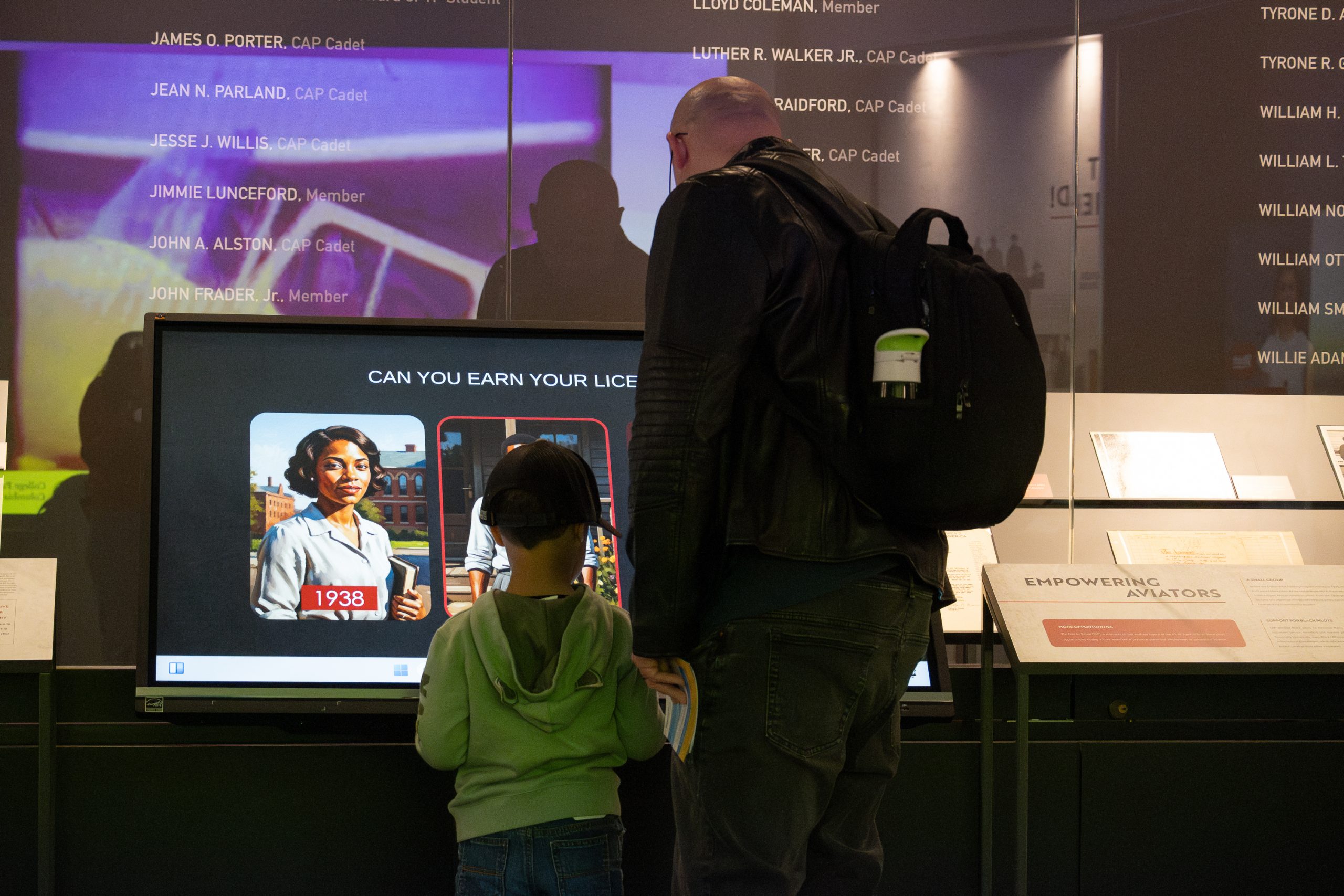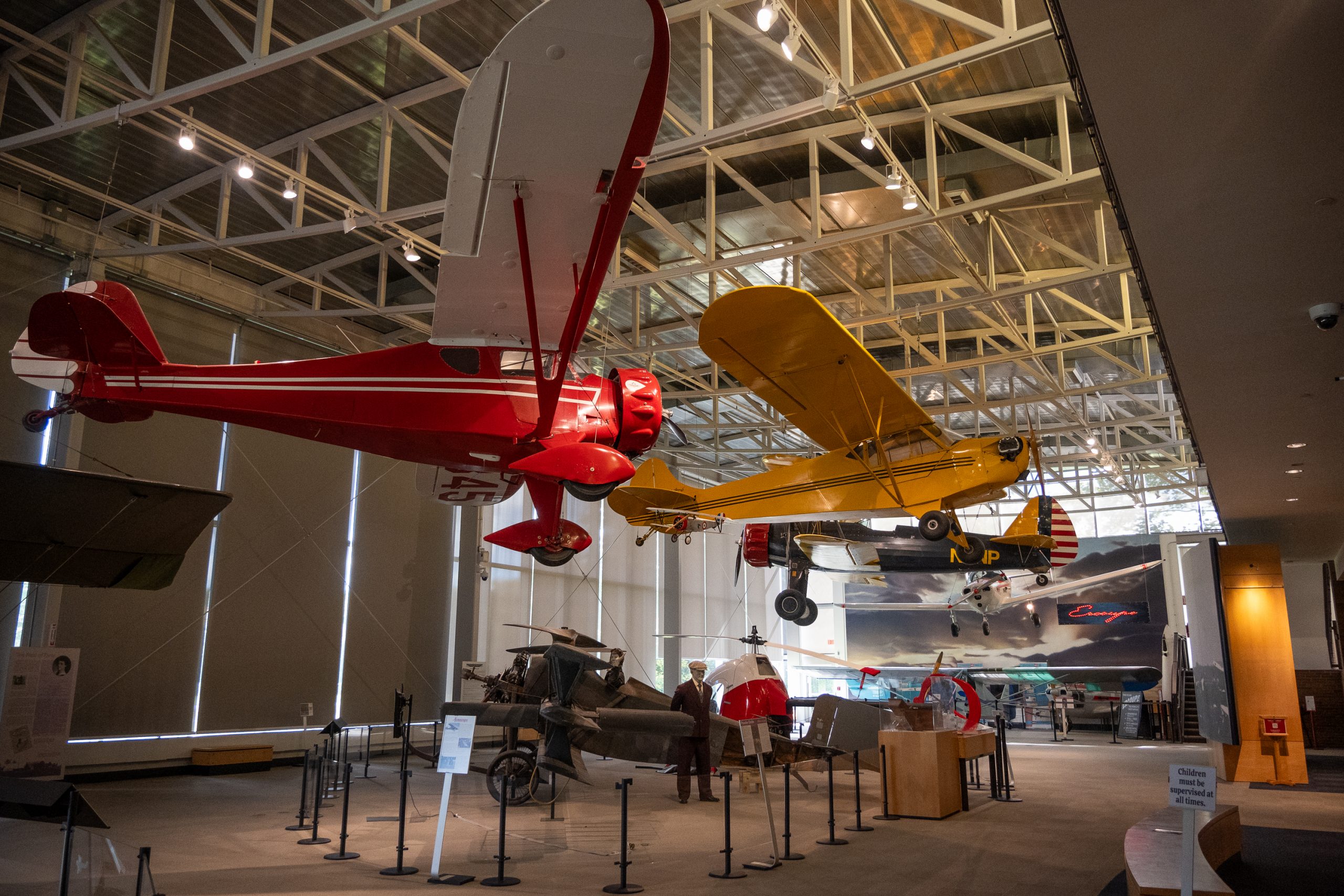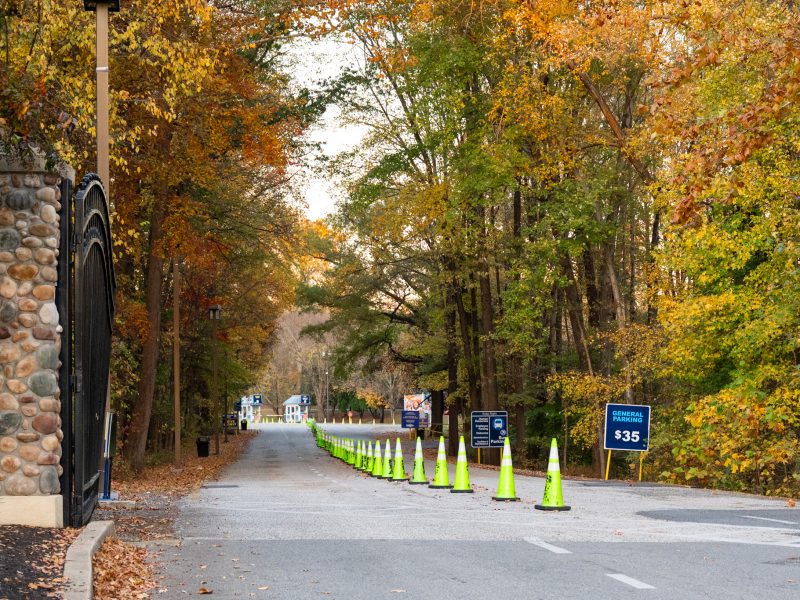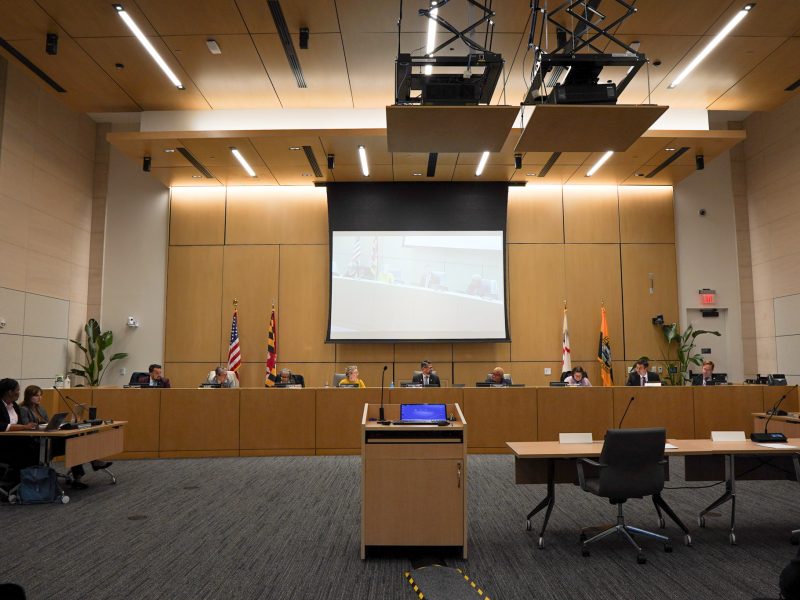Five minutes from Route 1, next to College Park Airport exists a museum largely unknown to its community.
The College Park Aviation Museum, which opened in 1998, sits beside the world’s oldest continuously operating airport. Its newest exhibit about Columbia Air Center, the nation’s first licensed Black-owned and operated airport, opened to the public on Oct. 10.
Located in Croom, Maryland, Columbia Air Center operated from 1940 to 1962 with a two year break during World War II, according to signage at the exhibit.
To tell the stories of the aviators who flew there, the exhibit features interactive video displays, historical documents from the airfield and even a choose-your-own-adventure game about earning a pilot’s license.
A gas pump — one of the only remaining items from the airfield — sits encased in glass near a projector that plays historical footage.
Ashley Harman, an audiology doctoral student at the University of Maryland, said she discovered the museum three years ago. She has since become a regular visitor, going four or five times this summer alone.
“It’s an excellent escape,” Harman said. “I feel like I’m always finding something new in there.”
[UMD students name asteroid ‘Diamondback’ after completing research for astronomy class]
Harman attended an Oct. 9 opening event for the Columbia Air Center exhibit, where she said individuals involved with the airfield’s history, including descendants of aviators who flew there, gave speeches about its legacy.
John Greene, an aviator who co-owned and helped manage Columbia Air Center, meticulously preserved photographs and documents from his time there. Greene’s collection was passed to the family of Herb Jones Jr., another aviator who co-owned the airfield, after his death.
Many of the museum’s exhibits are pieced together using artifacts gifted by historical figures or their families, according to Luke Perez, curator of the museum’s collections.
The Jones family loaned the museum more than 500 objects in 2021, forming the foundation of the exhibit that Perez said he developed for about four years.
“This story is not recognized. It’s largely unknown,” museum director Nadine Boksmati said. “So we’re proud to be able to share, and this is what we’re here for — local history.”
The museum is part of the Maryland-National Capital Park and Planning Commission and doesn’t rely on federal funding.
This allows it to continue highlighting local aviation history despite the ongoing government shutdown and efforts by the federal government to end diversity programs in federal institutions.
[3 UMD grants among $7.5B in Department of Energy cuts nationwide]
Despite the recent changes in federal policy, the museum’s staff has had a renewed interest in advertising the museum and its upcoming exhibits.
The museum hires students from this university as part-time educators and has partnered with various university departments, including the business school, according to Boksmati.
Perez said he hopes to have more school trips hosted at the museum.
The museum’s limited visibility partly stems from being under the Prince George’s County parks and recreation department’s marketing organization, according to Perez. He said this means they can’t always promote themselves as directly as they would like.
The museum has additional exhibits planned for 2026, including a display on the first successful vertical flight, which Perez said the museum plans to open in February.
For Harman, who bought a yearly museum membership, it provides a place to disconnect from campus stress. With a plane simulator, dress-up costumes and interactive exhibits, she often takes her younger family members with her when she visits.
Harman once also brought her grandfather, who has dementia and flew in the Navy. She said he was totally himself again while at the museum.
“He was telling me stories about his time in the Navy. He was pointing out the planes,” Harman said. “And I was like, ‘This is really special.’”







